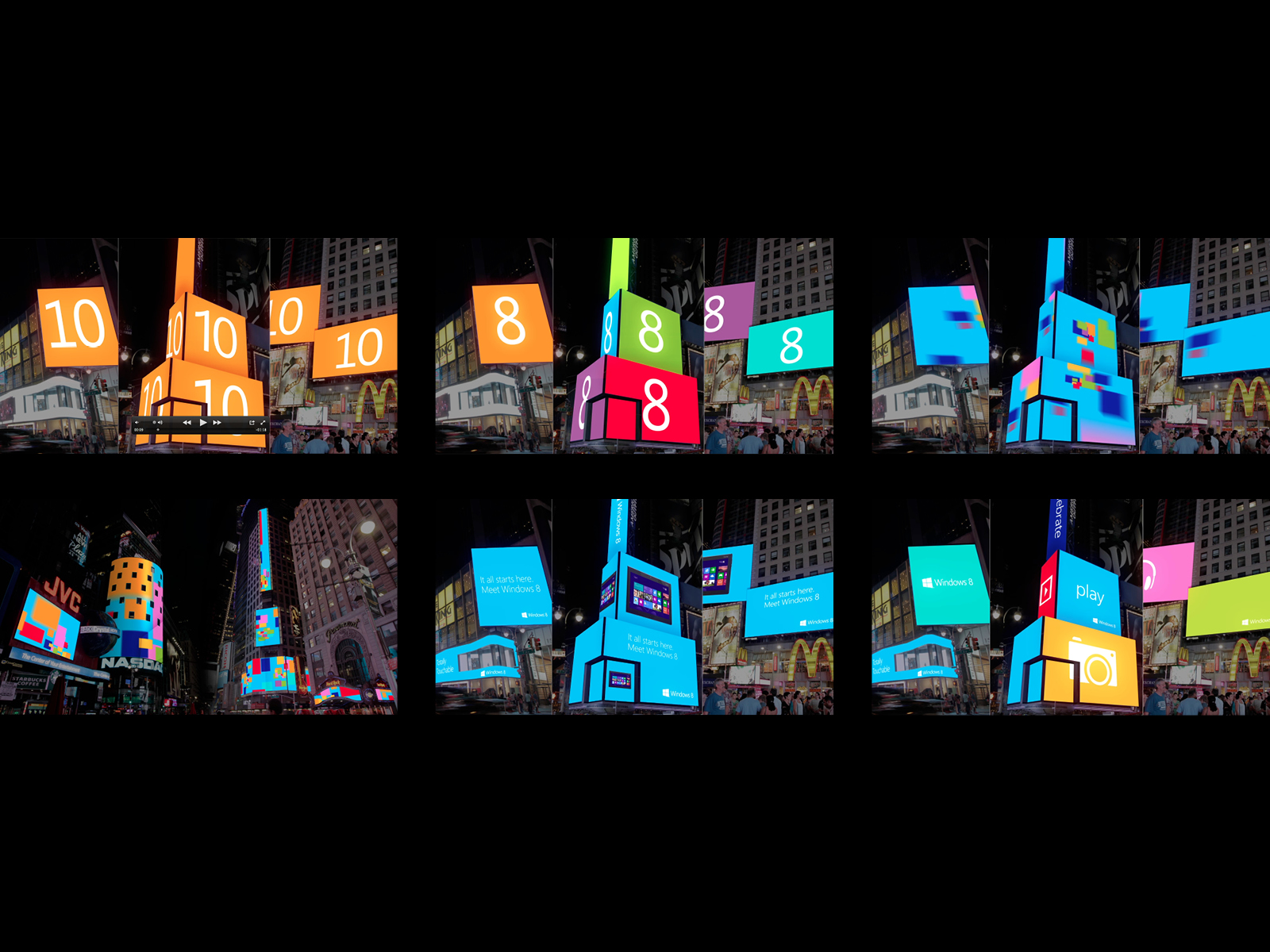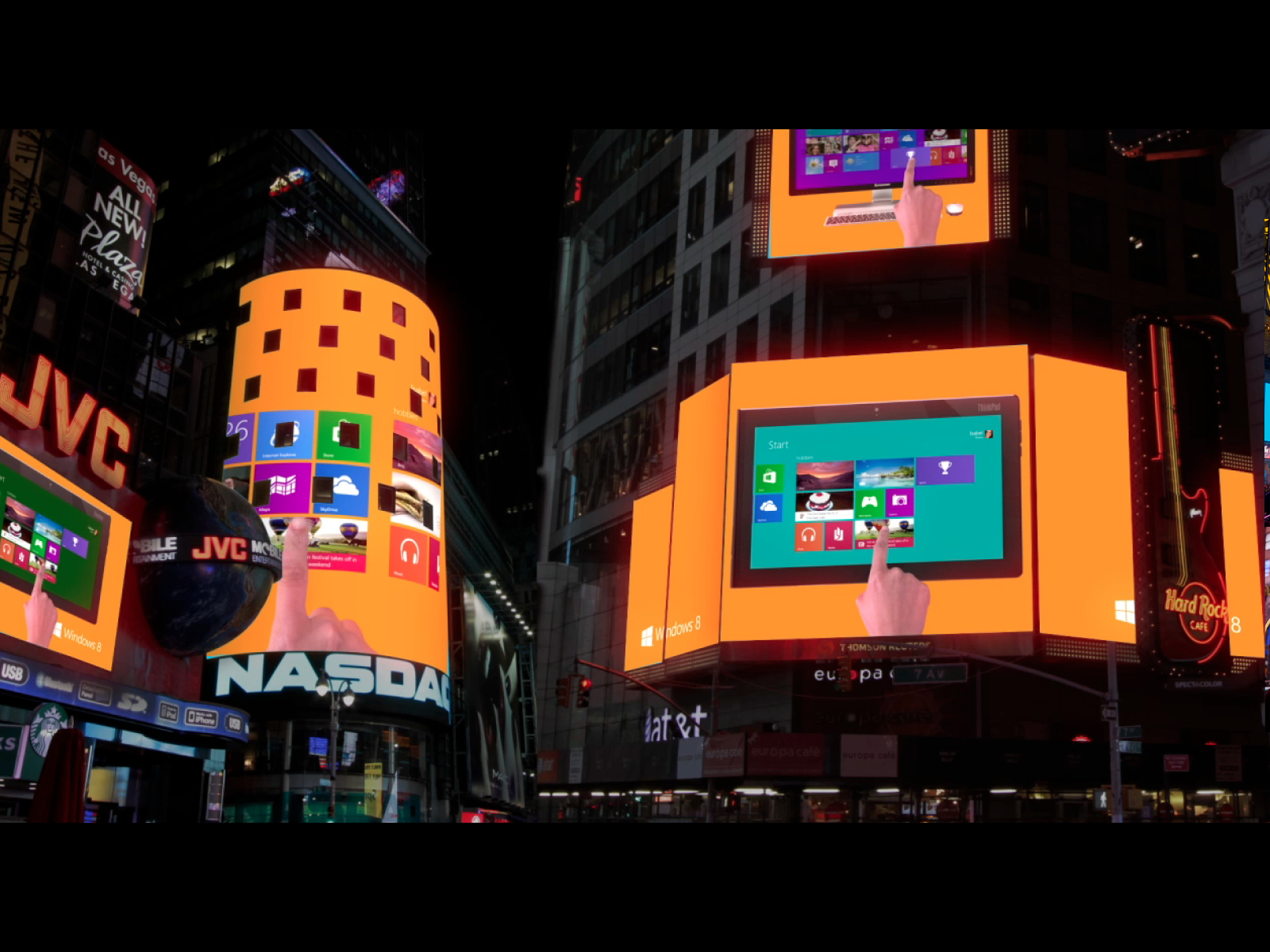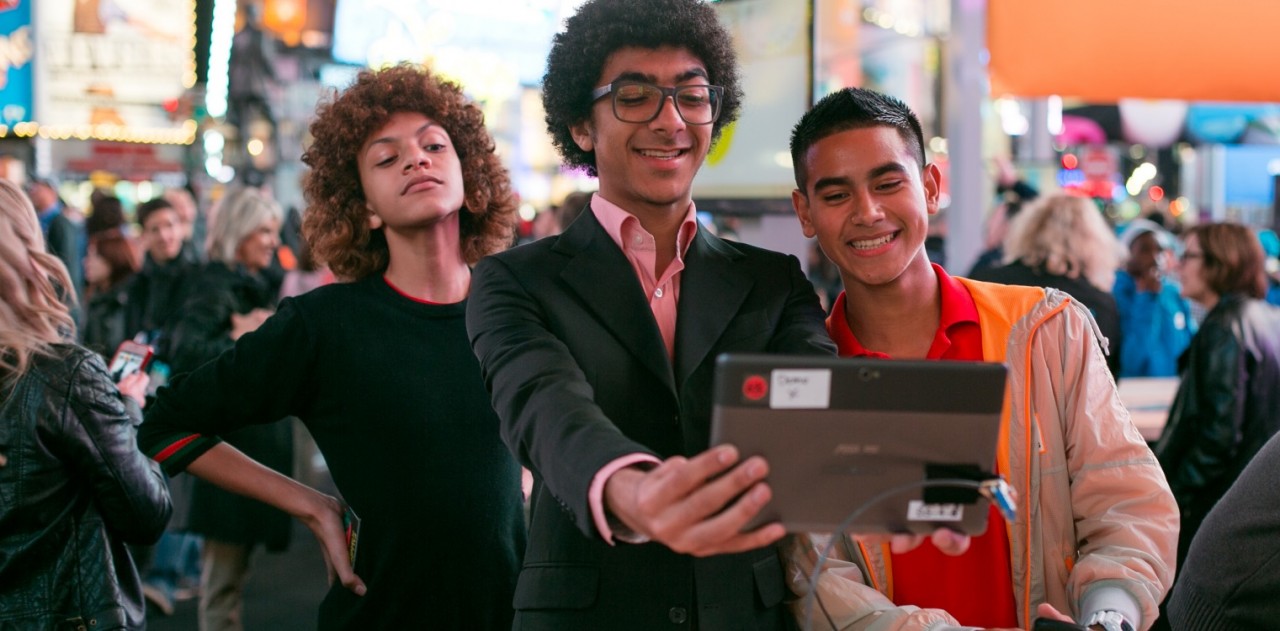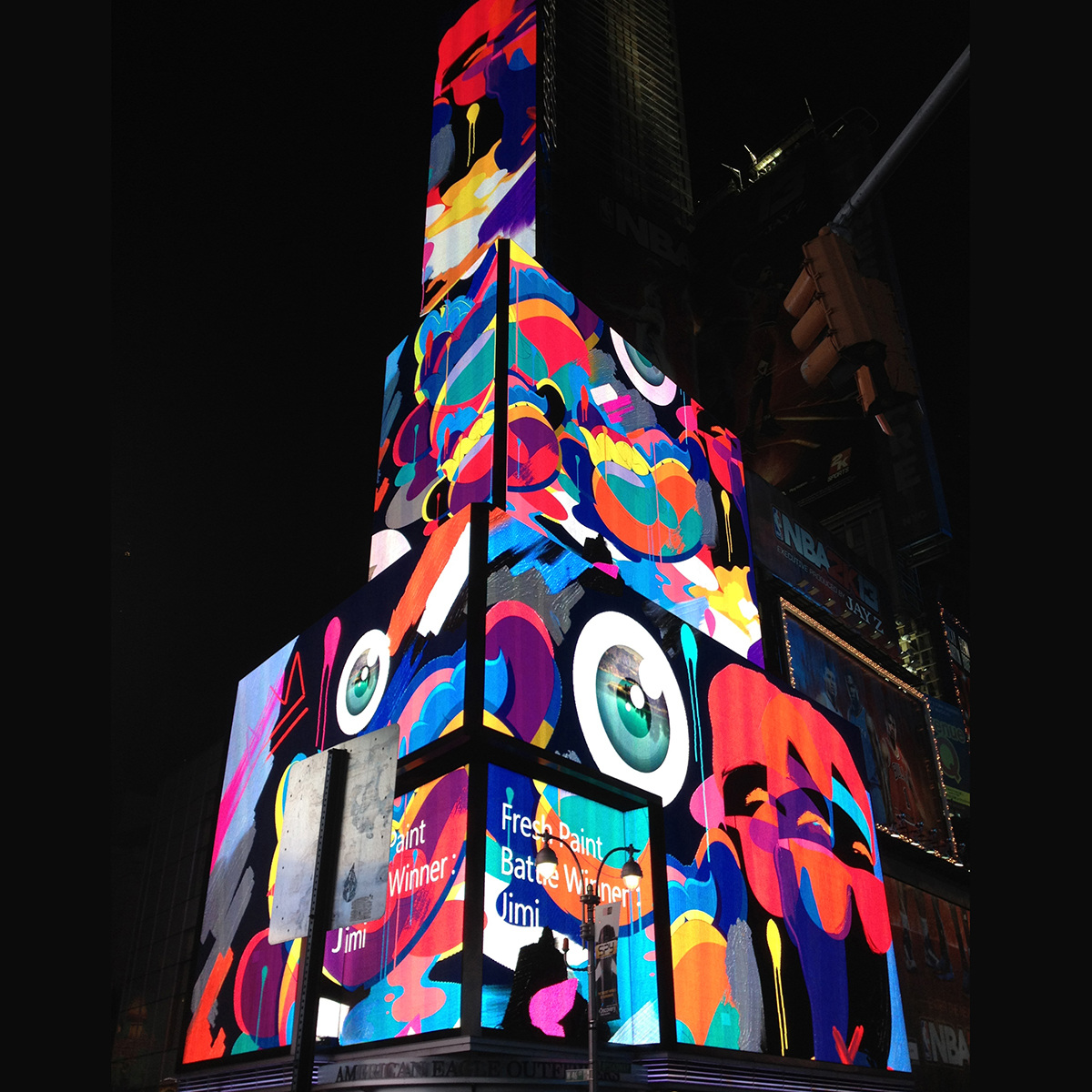Windows 8 Times Square Takeover™
—Winter // October 26, 2012The Times Square Takeover™ campaign was executed for Microsoft’s reveal of its latest operating system, Windows 8.
For three days, on 39 screens, Windows 8 took over New York City ’s most iconic intersection.
The event allowed Microsoft to create the world’s largest public, open showroom in the middle of Times Square. Microsoft was joined by its major partners including Dell, Asus, HP, Toshiba, Samsung and Sony.
For three days, on 39 screens, Windows 8 took over New York City ’s most iconic intersection.
The event allowed Microsoft to create the world’s largest public, open showroom in the middle of Times Square. Microsoft was joined by its major partners including Dell, Asus, HP, Toshiba, Samsung and Sony.
Creative
A connected environment can tell a story from angles through time and
space, making it far more compelling and engaging for consumers. The concept was to make the giant LED screens in Times Square feel like one connected Windows 8 device. Large hands would swipe screens in all directions, syncing up the environment into one immersive exerpience as the fans and press engaged with activations on the ground plane.



Technical
Windows 8 embodies several leaps in OS design. In addition to looking dramatically different from previous iterations of Windows, interactions are designed for touch as the primary means of engagement. This was new and had never been attempted before in such a visible, ubiquitous product. So, the brand wanted to provide consumers with a hands-on Windows 8 experience that went beyond a simple demo. Microsoft felt people needed to experience for themselves how magical and intuitive this new platform is. The company also wanted to demonstrate live tiles, icons and modules that updated in real time with information relevant to the user, and to showcase other OS features— called “Magic Moments”—such as snap view and full-screen apps.
The custom technology solution for the launch event incorporated a combination of Microsoft.NET, SQL Ser ver and HTML5 running in Microsoft Azure, as well as native Windows 8 apps. The result: a high-tech experience that covered Times Square with oversized tables with Windows 8 PCs, then broadcasted consumers using the OS on the ground so that thousands more could see it on the Square’s 39 massive screens. They were all synchronized, so as consumers played with the desktops, their photos and drawings appeared simultaneously on the screen closest to them. Visitors even played Windows 8 games in gigantic scale by mirroring gameplay to the American Eagle and Reuters screens.
The custom technology solution for the launch event incorporated a combination of Microsoft.NET, SQL Ser ver and HTML5 running in Microsoft Azure, as well as native Windows 8 apps. The result: a high-tech experience that covered Times Square with oversized tables with Windows 8 PCs, then broadcasted consumers using the OS on the ground so that thousands more could see it on the Square’s 39 massive screens. They were all synchronized, so as consumers played with the desktops, their photos and drawings appeared simultaneously on the screen closest to them. Visitors even played Windows 8 games in gigantic scale by mirroring gameplay to the American Eagle and Reuters screens.
Supporting synchronized and dynamic content across 39 displays in Times Square had never been done before. The 39 displays were controlled by multiple signage platforms and had no direct network connection. Some didn’t have usable Internet connections. However, the technology combination made it possible to turn all 39 separate screens in Times Square into a single canvas controlled by Windows 8 tablets and all-in-one PCs on the ground. The solution has changed expectations of what a Times Square takeover should look like.
The custom technology solution for the launch event incorporated a combination of Microsoft.NET, SQL Ser ver and HTML5 running in Microsoft Azure, as well as native Windows 8 apps. The result: a high-tech experience that covered Times Square with oversized tables with Windows 8 PCs, then broadcasted consumers using the OS on the ground so that thousands more could see it on the Square’s 39 massive screens. They were all synchronized, so as consumers played with the desktops, their photos and drawings appeared simultaneously on the screen closest to them. Visitors even played Windows 8 games in gigantic scale by mirroring gameplay to the American Eagle and Reuters screens.
The custom technology solution for the launch event incorporated a combination of Microsoft.NET, SQL Ser ver and HTML5 running in Microsoft Azure, as well as native Windows 8 apps. The result: a high-tech experience that covered Times Square with oversized tables with Windows 8 PCs, then broadcasted consumers using the OS on the ground so that thousands more could see it on the Square’s 39 massive screens. They were all synchronized, so as consumers played with the desktops, their photos and drawings appeared simultaneously on the screen closest to them. Visitors even played Windows 8 games in gigantic scale by mirroring gameplay to the American Eagle and Reuters screens.
Supporting synchronized and dynamic content across 39 displays in Times Square had never been done before. The 39 displays were controlled by multiple signage platforms and had no direct network connection. Some didn’t have usable Internet connections. However, the technology combination made it possible to turn all 39 separate screens in Times Square into a single canvas controlled by Windows 8 tablets and all-in-one PCs on the ground. The solution has changed expectations of what a Times Square takeover should look like.
Behind the Scenes
The team at R/GA executed an excellent animated campaign in a very short period of time. A lot of late nights were spent discreetly testing content on the screens during the least popular time of day - 3AM. They attempted to do the impossible, sync 39 screens, all running on different software and systems.

